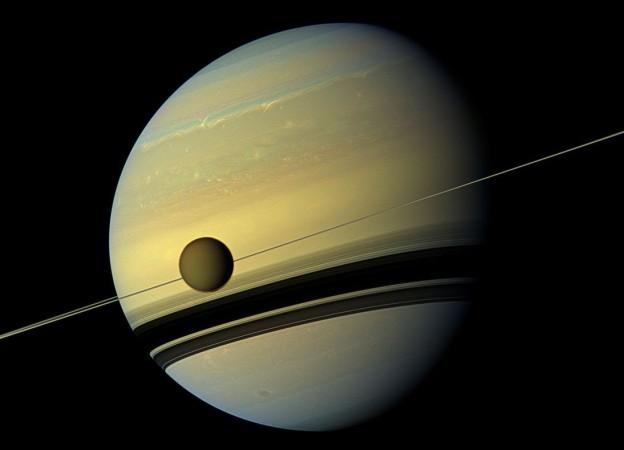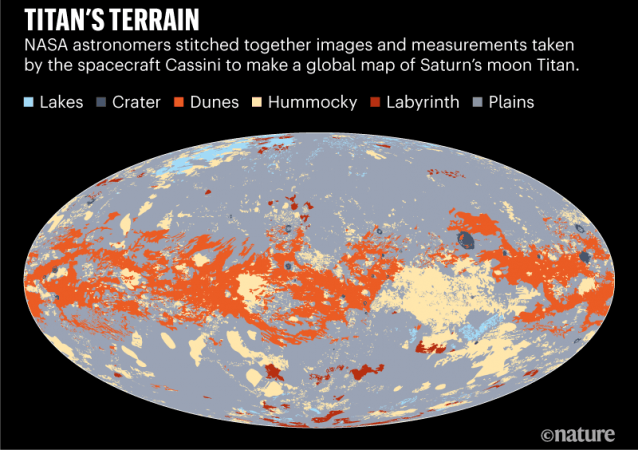Saturn's largest moon, Titan, is more like Earth, giving researchers enough hope to explore life beyond our home planet. From wind to rain and mountains, Titan has it all - thanks to the data gathered from NASA's Cassini mission.
Astronomers published their findings in Nature Astronomy that reveals interesting facts about Saturn's moon. As NASA's Cassini mission mapped the surface of Titan, the charts revealed diverse terrain of mountains, plains, valleys, craters and lakes. This is a breakthrough discovery as astronomers haven't been able to find anything this close to Earth in the Solar System.
"Titan has an atmosphere like Earth. It has wind, it has rain, it has mountains. It's a really very interesting world, and one of the best places in the Solar System to look for life," Rosaly Lopes, a planetary scientist at NASA's Jet Propulsion Laboratory in Pasadena, California, said.
Further exploration of Titan
The Earth-like nature of Titan makes it an interesting and important part of future Solar System explorations. NASA is planning another mission by 2034, where it will send a drone to fly around the surface of Titan in order to study the moon better.

Hopefully, scientists and astronomers will be able to find answers to some important questions about Titan, like "what kinds of changes has Titan gone through that are seasonal, and what sort of changes might be driven by the internal [heat] of Titan?" Tracy Gregg, a planetary geologist at the University at Buffalo in New York pointed out.
What makes Titan Earth-like?
Cassini's spacecraft gathered a great deal of information about Saturn and its moons during its space exploration from 2004 to 2017. The global mapping of Titan was done after more than 100 fly-bys of the moon, which eventually resulted in capturing a glimpse of the surface through its thick atmosphere.
According to Titan's terrain map shared by NASA, two-thirds of Saturn's largest moon is covered in plains, 17 percent in sandy dunes, mostly around the equator, around 14 percent in hills or mountains and 1.5 percent is "labyrinth" terrain, which is described as valleys carved by rain and erosion, according to Nature.

Interestingly, the data revealed that liquid on the surface of Titan, making it the only world in the Solar System besides Earth with the known formation of liquid. But unlike Earth, the liquid on moon's surface is methane and it covers 1.5 percent of the surface - specifically near its north pole.
NASA astrobiologist Chris McKay had said Titan standing on the surface of the moon would be similar to resting on the bottom of a pool on Earth. All that we'd need is an oxygen mask and warm clothing, but exempted the need for a pressurised suit to survive.
"If you were in the outer solar system and you had to make an emergency landing, go to Titan," McKay had said in a 2015 interview with Space.com.
Alien life on Titan
The discoveries shedding light on Titan's diversities and similarities to Earth also points scientists in the direction to find alien life. "It's one of the places in the solar system where it is like[ly] that life may have evolved because we have the combination of a lot of organic materials," Lopes added.
"I think as we study Titan more, we will be able to find out much more about what has led to the evolution of the very different moon," she added.





!['Had denied Housefull franchise as they wanted me to wear a bikini': Tia Bajpai on turning down bold scripts [Exclusive]](https://data1.ibtimes.co.in/en/full/806605/had-denied-housefull-franchise-they-wanted-me-wear-bikini-tia-bajpai-turning-down-bold.png?w=220&h=138)



